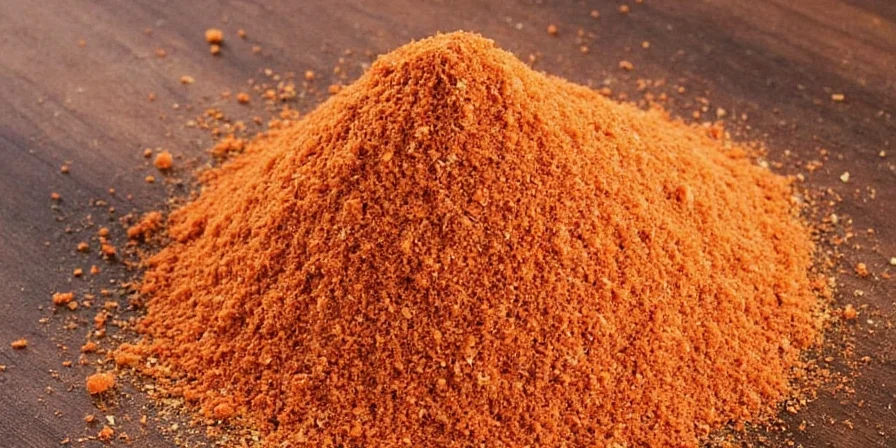If you've ever stood in a spice market, stared at a bag labeled ras al hanout, and wondered what magical potion you were about to sprinkle into your stew—you're not alone. This North African spice blend is the culinary chameleon: adaptable, regionally diverse, and capable of transforming ordinary dishes into extraordinary experiences.
Table of Contents
- What Is Ras Al Hanout?
- Why So Many Spices? A Breakdown
- Homemade vs. Store-Bought: Which One Wins?
- How to Use Ras Al Hanout Like a Pro
- Ras Al Hanout in Modern Cuisine: From Tagines to Tacos
- Health Benefits & Fun Facts (Yes, Spices Can Be Fun)
- Summary: Spice Up Your Life, Literally
What Is Ras Al Hanout?
Ras al hanout translates to "top of the shop" in Arabic—signifying the premium blend a spice merchant reserved for esteemed customers. Unlike standardized mixes, this blend has no fixed recipe. Moroccan, Algerian, and Tunisian versions vary dramatically, incorporating 8-30 spices based on regional availability and family traditions. Its variability isn't inconsistency; it's a celebration of local terroir and cultural exchange.

Why So Many Spices? A Breakdown
The complexity serves a purpose: balancing earthy, sweet, floral, and warm notes. While recipes vary, these core spices form the foundation:
| Spice | Role in the Blend |
|---|---|
| Cumin | Earthiness, umami depth |
| Coriander | Citrusy brightness to cut richness |
| Paprika | Vibrant color and subtle sweetness |
| Cinnamon | Warm sweetness for balance |
| Nutmeg | Subtle complexity in small doses |
| Ginger | Peppery warmth without heat |
| Allspice | Fruity undertones mimicking cloves |
| Cardamom | Floral elegance to lift the blend |
Homemade vs. Store-Bought: Which One Wins?
Store-bought versions lack the vibrancy of freshly ground spices. Creating your own unlocks layered flavors impossible in pre-mixed versions. Here's the professional approach:
- Step 1: Toast whole spices (cumin, coriander, fennel seeds) over medium-low heat until aromatic—never burnt.
- Step 2: Cool completely before grinding to preserve volatile oils.
- Step 3: Combine with pre-ground warm spices (cinnamon, ginger) for optimal flavor integration.
- Step 4: Store in amber glass jars; light degrades delicate compounds within weeks.

How to Use Ras Al Hanout Like a Pro
Move beyond basic rubs with these chef-tested applications designed for home kitchens:
- Oil Infusion: Steep 1 tsp in warm olive oil for 20 minutes; drizzle over roasted vegetables or hummus.
- Breakfast Boost: Sprinkle into oatmeal or yogurt with honey for unexpected warmth.
- Grain Enhancement: Stir 1/2 tsp into couscous or rice during cooking.
- Cheese Pairing: Dust over aged cheeses like Manchego for complementary notes.
- Cocktail Rim: Mix with flaky salt for smoky margaritas or Bloody Marys.

Ras Al Hanout in Modern Cuisine: The Global Fusion Evolution
Contemporary chefs leverage ras al hanout's complexity in unexpected contexts, revealing its hidden versatility. This isn't random experimentation—it's culinary evolution rooted in historical spice trade patterns. When 19th-century trade routes introduced Southeast Asian spices like nutmeg to North Africa, local blends absorbed these ingredients organically. Today's innovative uses continue this centuries-old tradition of cross-cultural adaptation:
- Plant-Based Cooking: Mimics meaty depth in mushroom bourguignon or lentil loaf.
- Pastry Application: Adds intrigue to chocolate truffles or pear tarts.
- Cold Dishes: Balances richness in avocado mousse or beetroot carpaccio.
- Preservation: Infuses into honey or vinegar for flavored condiments.

Health Benefits & Fun Facts (Beyond Flavor)
While not medical substitutes, traditional spice associations offer functional benefits. Note: Always consult healthcare providers for medical conditions.
- Cumin: Traditionally used to support digestive comfort.
- Ginger: Commonly associated with motion sickness relief.
- Cinnamon: Historically linked to blood sugar management.
- Coriander: Contains compounds studied for antioxidant properties.
Unique Insight: Some Tunisian spice masters add dried rose petals—a nod to ancient Persian influences—creating floral variations rarely found outside specific regions.

Summary: Your Culinary Passport in a Jar
Ras al hanout transcends being merely a spice blend—it's a living archive of North African cultural exchange. Its regional variations tell stories of trade routes, agricultural practices, and familial traditions. By understanding its core principles rather than chasing fixed recipes, home cooks unlock infinite creativity. Start with 3 foundational spices (cumin, coriander, cinnamon), then experiment with regional additions.
Frequently Asked Questions
Can ras al hanout contain saffron?
Yes, in premium Moroccan blends. Saffron adds floral notes and golden color, reflecting historical Andalusian influences. It's typically used sparingly due to cost.
How does ras al hanout differ from baharat?
Baharat is Middle Eastern with higher black pepper content and often includes dried lime. Ras al hanout emphasizes floral notes (like rose petals) and warm spices without citrus elements.
Is ras al hanout gluten-free?
Pure spice blends are naturally gluten-free. Verify store-bought versions for potential fillers or cross-contamination warnings if you have sensitivities.
Why does my homemade blend taste different each time?
This reflects authentic practice! Seasonal spice harvests, roasting duration, and ingredient ratios naturally vary. Embrace this as craftsmanship—not inconsistency.
In short: Stop seeking perfection. Taste as you blend, adjust ratios to your palate, and remember: the most authentic ras al hanout is the one that makes your kitchen come alive.












 浙公网安备
33010002000092号
浙公网安备
33010002000092号 浙B2-20120091-4
浙B2-20120091-4